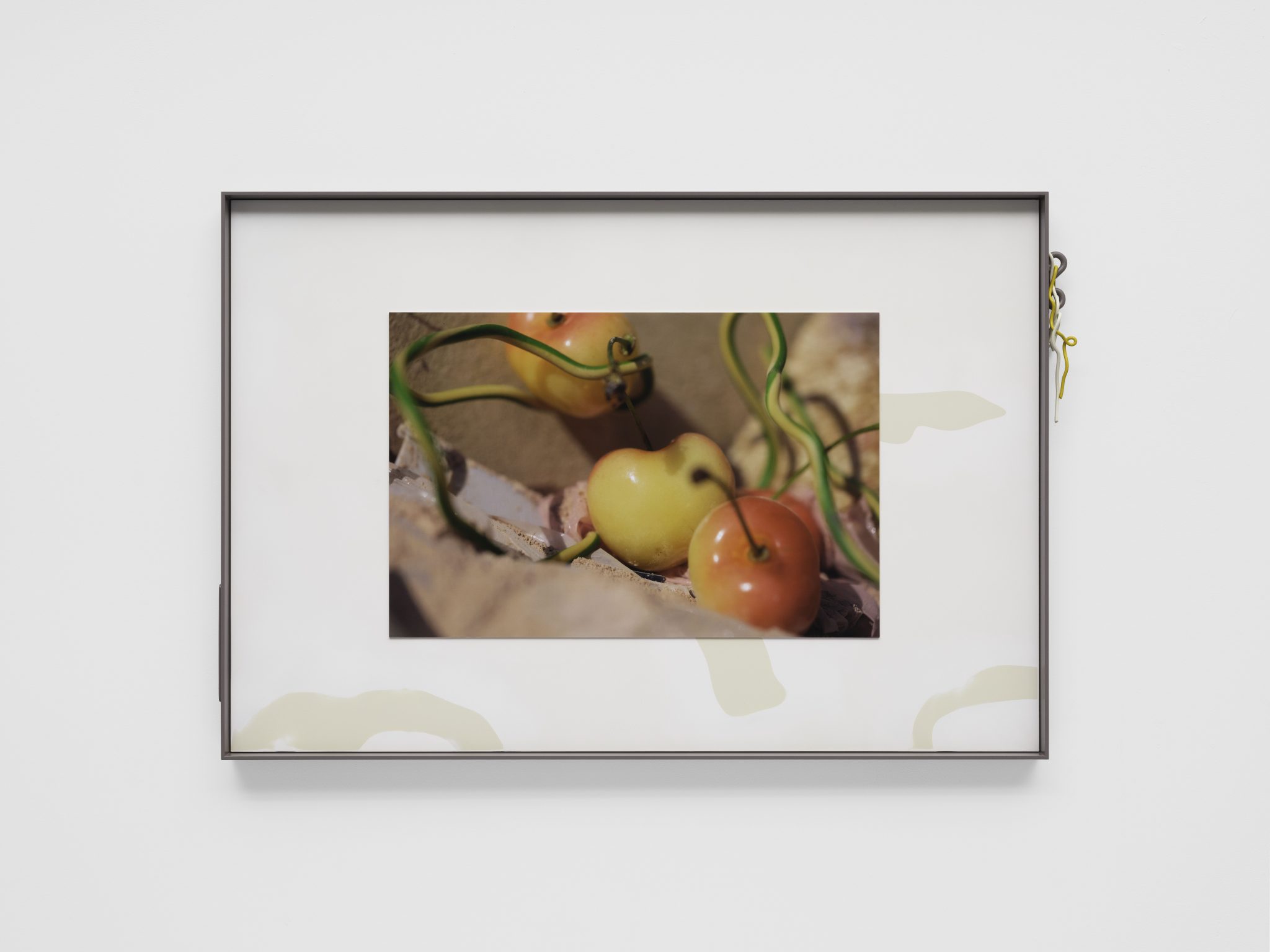The many fallacies of the multinational food industry are unpicked by Magali Reus in an exhibition that explores a troubled legacy of environmental concerns and colonial trade routes
There’s an ear of corn growing inside this streetlamp, an aubergine in the other, some mushrooms in another. Food, production and place meet in unexpected ways in Magali Reus’s exhibition, where the works on view reference fantastical farming and industrialised production, fitting for a show hosted in agricultural, rural France. The three series of works on view include five sculptures of fullsize streetlamps called Candlesticks (2022), each with a different vegetable nestled in its base as if it were a greenhouse; Clementine (2023), a series of sculptures that emulate large jam jars; and eight c-prints titled Landings (2022), each encased in a hand-carved aluminium frame that makes them more like objects than images.
The jam jars – which sport a gingham-printed metal lid – are an iconic European product. The brand, Bonne Maman, is designed to look nostalgic – with a name that references a grandma and a handwritten styled typeface that connotes ‘homemade’ – only its products have always been mass-produced by multinational food corporation Andros, which markets its preserves and pastries as the products of an imaginary French farmhouse. In Reus’s treatment, the jars become large sculptures, 45cm in diameter, protruding from the wall. In Clementine (Frank) the familiar jar looks broken and is filled with pink paint, echoing the way many households reuse the emptied jars. The sculptures look like they’re made of glass, but it’s actually epoxy resin: like the brand they imitate, they repackage an idea about the world and serve it back to us. Like Bonne Maman’s dream farmhouse, Reus’s artworks trade on recognisable objects, but her world feels artificial, and intentionally so.

The drive to Delme from Metz passes by French farmland. By which I mean: industrial agriculture. The area, once rich in iron, saw its resources depleted as the region changed hands between France and Germany over the course of centuries. The art centre is located in what was once the local synagogue, bombed by German soldiers during the Second World War and later rebuilt. The remaining Jewish community left this town, whose inhabitants now number 1,000, and in 1993 the synagogue became a venue for contemporary art. This double context – the building and the countryside, the marks history has left on this place – informs Reus’s works and how viewers see them. Like how farming has now moved so far away from the common image of natural small local production; like how the glass in Reus’s streetlamps and jam jars is actually epoxy resin. It’s synthetic but it looks so convincing, and this tension between the natural and artificial, the historical and the present, the image of the place and what it really is, informs the entire show.
The photos in the series Landings are of fruit and other items – building materials, sand, small woodchips – collected in a skip. The sides of some of the frames include a number connoting the distance between where the fruit was grown and where Reus bought it (3,708.9km for the cherries in Landings [3708.9, Statics]; 7,505km for the clementine in Landings [7505, Tunnels]) – the plat principal (main course) is this combination of something that is transported around the world and something throwaway. It’s a meeting of the natural and the industrial, the way quotidian things like an ear of corn can carry histories of production, colonial expansion and environmental concerns. In a world in which you can get a clementine in June that was grown thousands of kilometres away, maybe strawberries can also grow inside streetlamps. What seems natural is often industrial; yet, still, we want to tell ourselves stories about how it’s really natural.
Look up to the second floor of the building, which used to be the women’s section of the gender-segregated synagogue, and you will find a tongue-in-cheek reference to French conceptual artist Daniel Buren’s 1997 exhibition at the CAC. Reus covers the arches Buren once painted with his signature 8.7cm stripes with a gingham pattern in the same blue and yellow shades Buren used. This decision – not even officially an artwork – ties it all together: the gingham back to the Bonne Maman jars, the colour scheme to Buren’s artwork, the highlighting of the architecture as a way of drawing attention to the building’s past use. Along with the other works on view – the irreverent oversized sculptures, the quotation of industrial design, the consideration of food manufacturing – it comments on this place itself. A building that is no longer what it used to be, in a region marked by war, in a contemporary world where the industrial is passed as natural. Reus questions why we buy it all.
Le Plat Principal at Centre d’Art Contemporain – la synagogue de Delme, through 4 June
